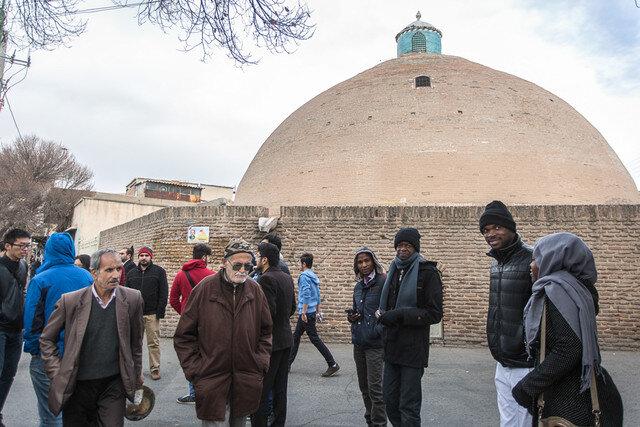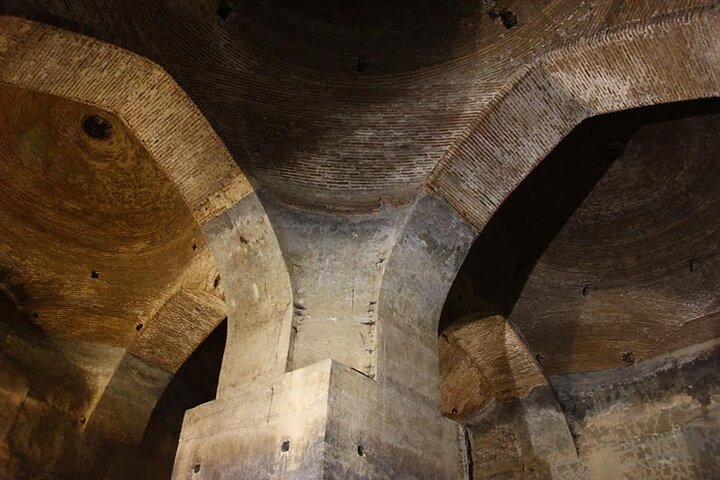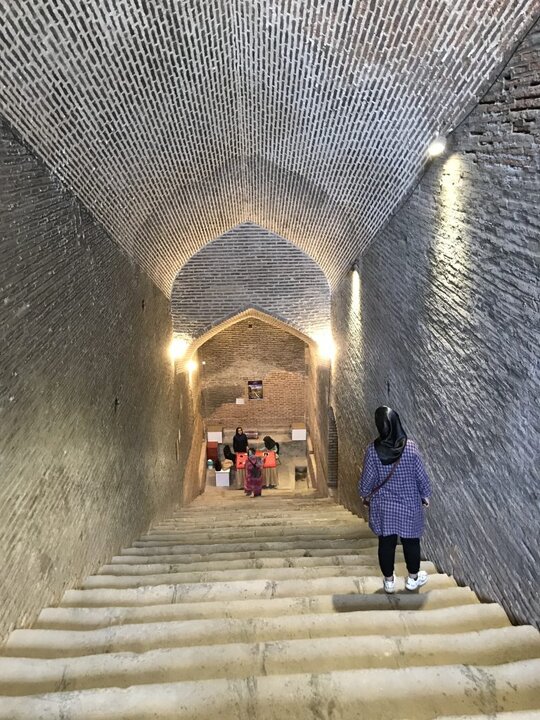Sardar-e Bozorg: a journey through Qazvin’s subterranean realm

TEHRAN – Ab-Anbar-e Sardar-e Bozorg, composed of mudbrick twin cisterns, stands as a remarkable feat of Iranian architectural ingenuity within the ancient city of Qazvin.
Commissioned by the influential brothers Mohammad Hasan Khan Sardar and Mohammad Hossain Khan Sardar, esteemed rulers during the reign of Fathali Shah, these structures are now among the city's rich historical legacy.
According to Razieh Rahmani, an expert in Iranian studies, Ab-Anbar-e Sardar-e Bozorg has the largest single-dome cistern in Iran. Rahmani also states that the city of Qazvin once had more than 100 cisterns, but currently, the number of intact cisterns has decreased to less than 10. The main reason for this can be attributed to the rapid development of Qazvin and its high rate of immigration.

Qazvin, steeped in antiquity and nestled at the foothills of the Alborz Mountain range, has long been renowned for its innovative water management systems, notably exemplified by the traditional Iranian cisterns, locally known as Ab-Anbars. These ancient reservoirs, ingeniously designed to conserve and optimize water utilization, have played a pivotal role in sustaining communities throughout the ages.
The larger of the twin cisterns is celebrated as one of Iran's largest single-dome cisterns, showcasing impressive architectural features that reflect the region's cultural heritage. Its imposing entrance, adorned with pointed arches, beckons visitors into a subterranean realm accessed via Rah Shir, a passage descending twelve meters below ground level. Though the passage has weathered the passage of time, retaining its historic charm, three of its original stone stairs have succumbed to decay.

At the terminus of Rah Shir lies Pa Shir, the heart of the cistern where water is stored. Here, walls crafted from lime and Sarouj, a traditional mortar akin to cement, provide structural integrity to the expansive chamber. The cistern's grand dome, constructed of brick, soars overhead, crowned by a towering wind catcher reaching approximately thirty meters in height. This architectural marvel boasts a remarkable capacity, capable of storing three thousand and six hundred square meters of water, sourced from three ancient Qanats: Khomartash, Khiaban, and Keyfouri or Teyfouri.
Alongside the cisterns, the Sardar school stands as a testament to their enduring legacy, symbolizing their commitment to education and community development.
Constructed in 1227 AH, the Sardar-e Bozorg twin cisterns occupy a venerable position within Qazvin's historic landscape. As guardians of precious water resources, they continue to inspire awe and admiration, beckoning modern visitors to explore their storied depths and partake in the legacy of generations past.
AM
